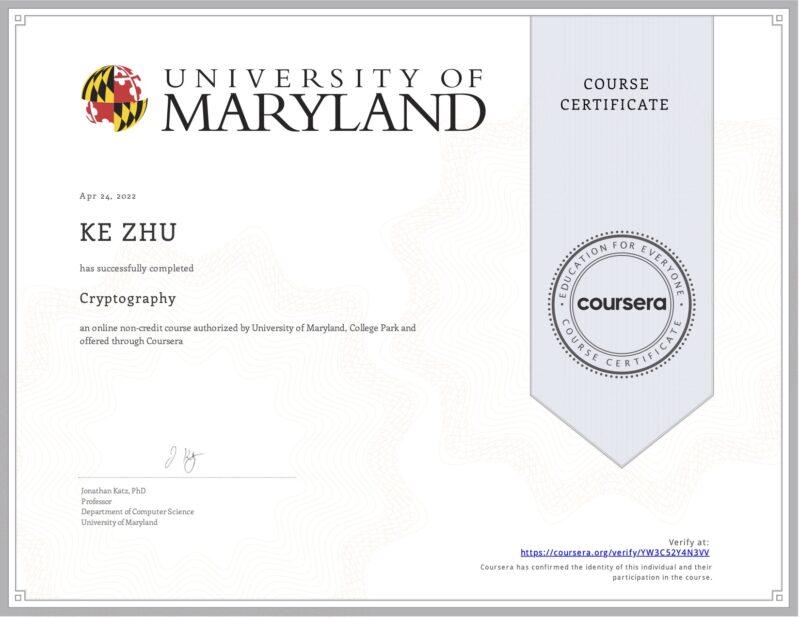Cryptography
University of Maryland College Park
This course is definitely one of the best that you shouldn’t miss out on. It is a wide-ranging course covering tons of topics, meanwhile many of them are taught in depth. I love the syllabus, the pace, and the internal logic among different modules. Learning this course is an amazing experience.
I am thrilled that I have got to write 11 posts to help consolidate what is taught and what I learned. I recommend you do the same if you want to pass tests smoothly. Don’t be hasty. Go slow to go fast.
The journey begins with the classical cryptography. The Vigenère Cipher, One-Time Pad, perfect secrecy. The basic desire of “being safe” arise from our minds. Cryptography once was an art, it still is, but nowadays it is much more of a science.
However perfect secrecy is not of much use, it is relaxed to be more meaningful and useful. A few important concepts are introduced: Computational Secrecy, Pseudo-randomness and Proof of Security. These are the cornerstone of modern cryptography.
Smoothly, the course moves its focus on how secrecy and integrity are solved in the private key setting: Private Key Encryption and Messages Authentication Codes. Any of the topics covered probably deserves a full textbook in its own right. It is amazing that they are well-structured clearly in just two modules, that is very helpful.
The second half of the course is about public key setting, but before that the professor put much effort in the Number Theory and Group Theory. I find this is more than helpful, but actually essential for further studying. Particularly, a solid understanding of Group Theory is crucial.
From 1970’s on, the Public Key Encryption revolution has changed the world. Cryptography seems split into two branches: RSA based, or discrete-logarithm Diffie-Hellman based. Besides the fascination of asymmetric keys, you will still meet the old friends like thread models CPA, CCA, they become monstrously hard to master.
The next big thing is Digital Signature. The RSA-FDH scheme, Fiat-Shamir transform, Schnorr identification scheme, DSS scheme standardized by NIST. My oh my! It takes time to digest.
Last module is about Public Key Infrastructure and widely use SSL/TLS protocols. This is actually putting everything we have learned together. It is shocking to find out that the entire Internet nowadays is based on them.
I highly recommend this course to those who wants to learn cryptography systematically. Your effort will pay off.
Quick Recap
My Certificate

https://coursera.org/share/384d87136bca8cd58349a83594ec800f
I am Kesler Zhu, thank you for visiting my website. Checkout more course reviews at https://KZHU.ai
